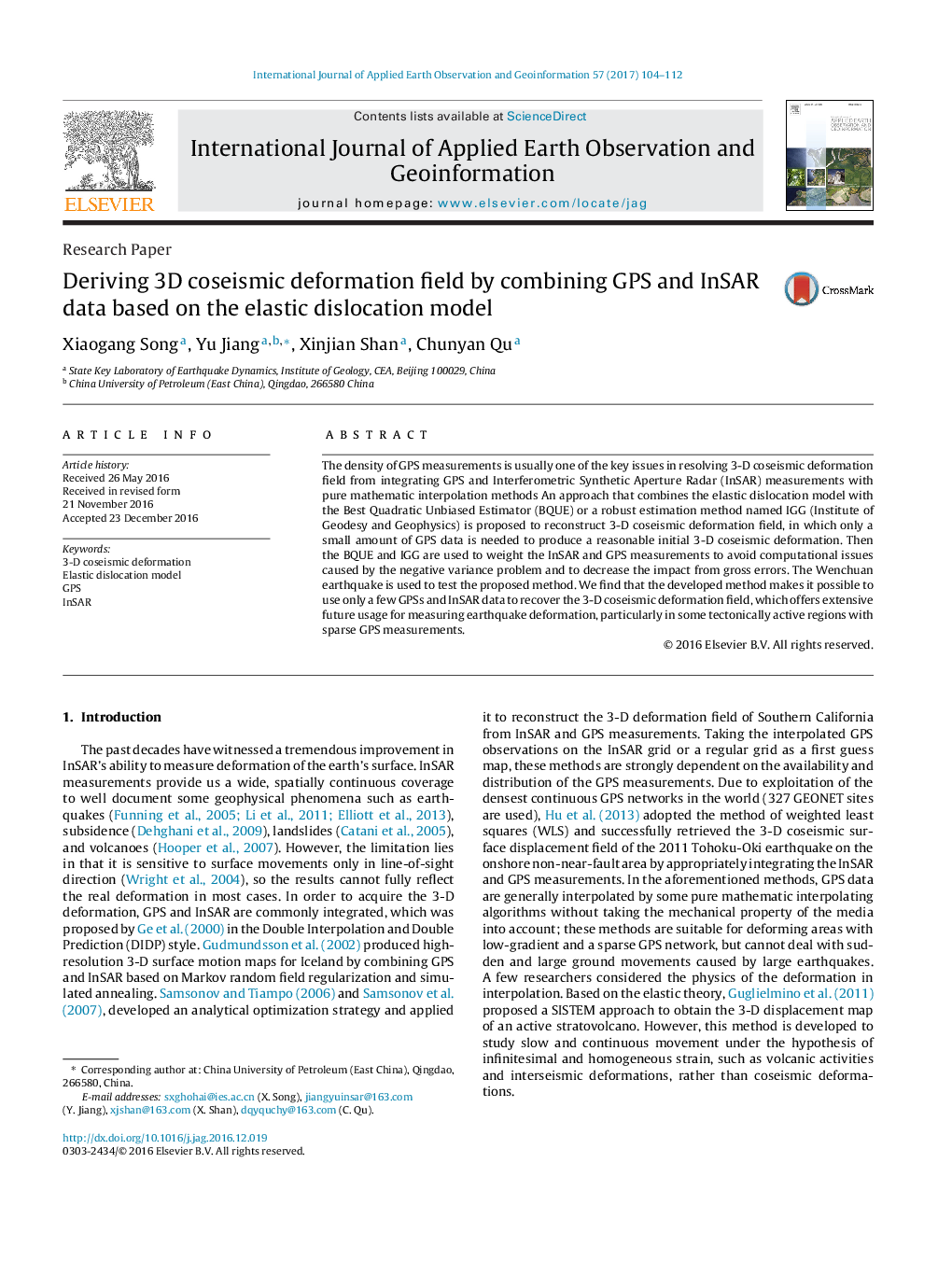| Article ID | Journal | Published Year | Pages | File Type |
|---|---|---|---|---|
| 5755555 | International Journal of Applied Earth Observation and Geoinformation | 2017 | 9 Pages |
Abstract
The density of GPS measurements is usually one of the key issues in resolving 3-D coseismic deformation field from integrating GPS and Interferometric Synthetic Aperture Radar (InSAR) measurements with pure mathematic interpolation methods An approach that combines the elastic dislocation model with the Best Quadratic Unbiased Estimator (BQUE) or a robust estimation method named IGG (Institute of Geodesy and Geophysics) is proposed to reconstruct 3-D coseismic deformation field, in which only a small amount of GPS data is needed to produce a reasonable initial 3-D coseismic deformation. Then the BQUE and IGG are used to weight the InSAR and GPS measurements to avoid computational issues caused by the negative variance problem and to decrease the impact from gross errors. The Wenchuan earthquake is used to test the proposed method. We find that the developed method makes it possible to use only a few GPSs and InSAR data to recover the 3-D coseismic deformation field, which offers extensive future usage for measuring earthquake deformation, particularly in some tectonically active regions with sparse GPS measurements.
Related Topics
Physical Sciences and Engineering
Earth and Planetary Sciences
Computers in Earth Sciences
Authors
Xiaogang Song, Yu Jiang, Xinjian Shan, Chunyan Qu,
